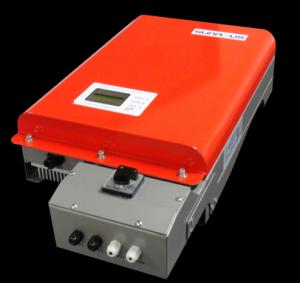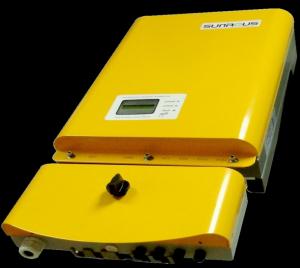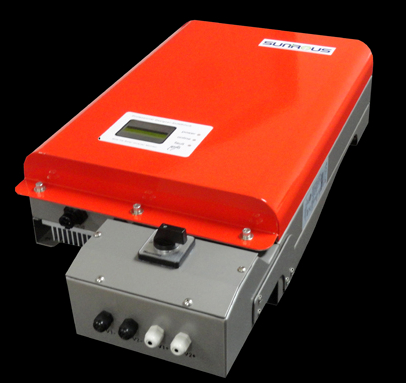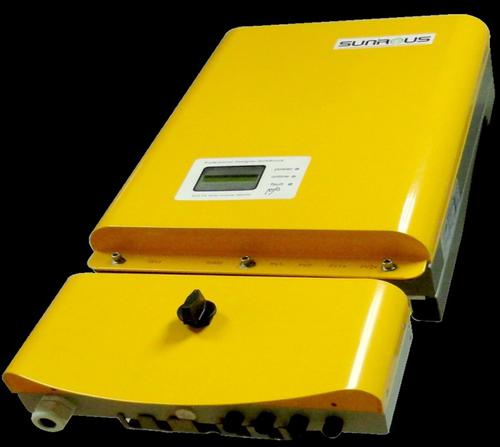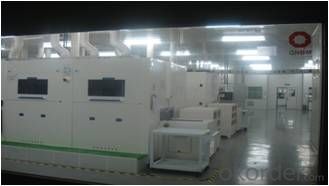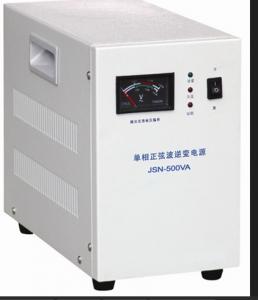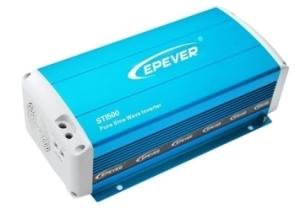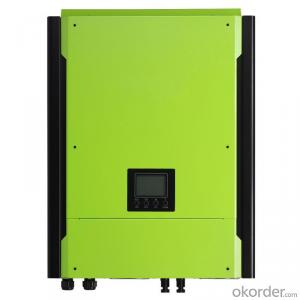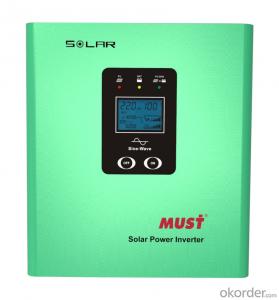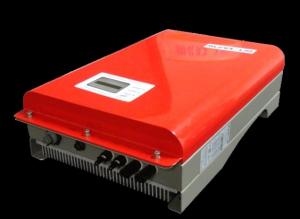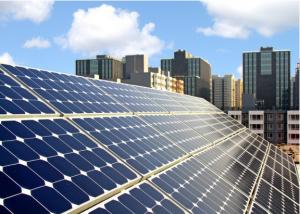Solar Inverter 30kw High Frequency Transformer Isolation PV Grid-Tied Inverter
- Loading Port:
- Shanghai
- Payment Terms:
- TT or LC
- Min Order Qty:
- 50 mm
- Supply Capability:
- 1000 mm/month
OKorder Service Pledge
OKorder Financial Service
You Might Also Like
· The highest effciency achieves 98%
· Wide input Voltage range
· Adopt connectors type cable connection, Easy operation and installation
· Best tracking effciency with OptiTrac MPP control
· operating temperature range -25 ℃ to + 55℃
· High reliability due to complete protection function
· Anti-theft protection
· Plug-in grounding
HF series 1.5kw — 5.0kw
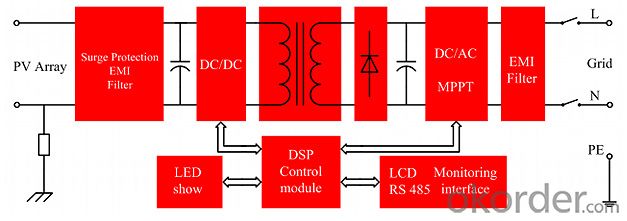
High frequency transformer isolation is the main feature of our production, which make Installation easier due to the reduced weight and higher conversion effciency because of omitting Low frequency transformer. The wide input voltage range from 180 to 600volt gives you extraordinary fexibility for you system design. Not need to set graphic display and RS485 communication system make the devices highly user-friendly.
This product can by multi-level parallel combination for 6kw to 20kw needed any power grade HF series technical parameter.
parameters:
GT1.5-ZX-01/HF | GT2.0-ZX-01/HF | GT2.5-ZX-01/HF | GT3.0-ZX-01/HF | GT4.0-ZX-01/HF | GT5.0-ZX-01/HF | |
Input(DC) | ||||||
Max.DC Power | 1600W | 2100W | 2650W | 3150W | 4200W | 5200W |
Max.DC Voltage | 600V | |||||
PV Voltage range, MPPT | 150V ~ 550V | 150V ~ 550V | ||||
Max.input current | 10.0A | 14.0A | 16.0A | 20.0A | 25.0A | 30.0A |
Number of MPP trackers | 1 | |||||
Max.number of strings (parallel) | 1 | 1 | 2 | 2 | 3 | 3 |
Output(AC) | ||||||
Nominal AC power / | 1500W | 2000W | 2500W | 3000W | 4000W | 5000W |
Max.output current | 13.0A/7.0A | 17.0A/9.0A | 21.0A/12.0A | 25.0A/14.0A | 21.0A | 30.0A |
Nominal AC Voltage / range | 102-138Vac/180-264Vac | 180-270Vac | ||||
AC grid frequency / range | 47.5-51.5Hz / 59.3-60.5Hz | |||||
Power factor at rated power | 1 | |||||
THD | < 3% | |||||
AC connection | Single-phase | |||||
Efficiency | ||||||
Max. efficiency/Californian efficiency | > 98.0% / > 97.0% | |||||
MPP adaptation efficiency | > 99.0% | |||||
Protection devices | ||||||
DC reverse polarity protection | √ | |||||
AC short-circuit protection | √ | |||||
Ground fault monitoring | √ | |||||
Grid monitoring | √ | |||||
Output Transient Voltage Suppression | √ | |||||
Over load | √ | |||||
Anti-islanding | √ | |||||
General data | ||||||
Dimensions (W/ H / D) in mm | 350 / 560 / 160 | 370 / 540 / 185 | ||||
Weight(Kg) | 16 | 19 | 23 | |||
Operating temperature range | -25 ~ +60℃ | |||||
Storage temperature range | -40 ~ +70℃ | |||||
Ambient humidity | 0 ~ 100% | |||||
Consumption (night) | < 0.5W | |||||
Topology | HF-transformer galvanic isolation | |||||
Cooling concept | Convection | |||||
Enclosure type | IP65 / NEMA 3R | |||||
Features | ||||||
DC connection: PV special connector | √ | |||||
AC connection: connector | √ | |||||
LCD display & Backlit | √ | |||||
LED display | √ | |||||
Interfaces: RS485 | √ | |||||
Warranty: 10 years | √ | |||||
Certificates & approvals | G83 / G59 / TUV / SAA / ETL / JET/ CE | |||||
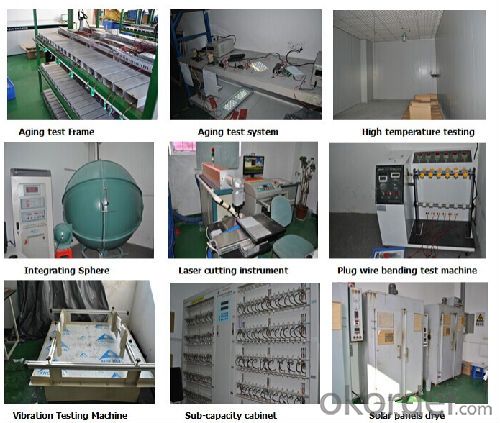
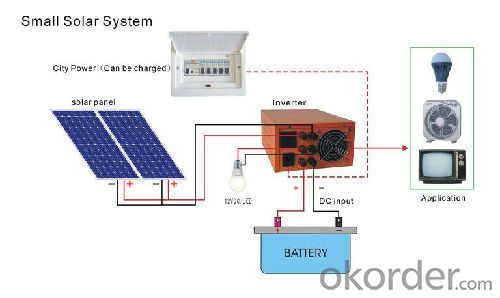
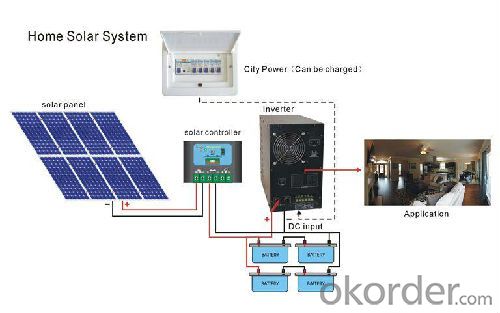
FAQ
Q1 : Do you accept OEM/ODM?
ODM&OEM are warmly welcomed !!!
Q2 : what’s your payment?
a)We can accept payment terms of T/T, Western Union, PayPal
Samples and trial order accept PayPal ,T/T & Western Union. normal order accept T/T &Western Union
b) 30% ADVANCE DEPOSIT after buyer's confirmed payment, the balance should be paid before shipping when goods are ready.
- Q: Can a solar inverter be connected to a battery storage system?
- Yes, a solar inverter can be connected to a battery storage system. In fact, this is a common setup in many residential and commercial solar installations. The solar inverter is responsible for converting the direct current (DC) generated by the solar panels into alternating current (AC) that can be used to power electrical appliances. By connecting a battery storage system to the solar inverter, excess energy generated by the solar panels can be stored in the batteries for later use, such as during periods of low sunlight or during power outages. This allows for greater energy independence and the ability to maximize the utilization of solar energy.
- Q: Can a solar inverter be installed in a multi-storey building?
- Installing a solar inverter in a multi-storey building is indeed possible. The process of installation in such a building is similar to that in any other structure. Usually, the solar panels are placed on the rooftop or another open area that allows for maximum sunlight exposure. The solar inverter then converts the DC power generated by the panels into AC power. In a multi-storey building, the solar inverter can be positioned either on the rooftop or in a dedicated room or space on one of the floors. Factors like accessibility, ventilation, and proximity to the solar panels should be considered when deciding where to install it. Compliance with local building codes and regulations is crucial to ensure the inverter is placed in a safe and secure location. Furthermore, proper installation of the wiring and cabling necessary for connecting the solar panels to the inverter is essential. The vertical distance between the panels and the inverter should be taken into account. Additionally, precautions must be taken to prevent any harm or electrical risks during the installation process. By carefully planning and using appropriate installation techniques, a solar inverter can be readily installed in a multi-storey building. This installation will enable the utilization of solar energy and reduce electricity costs for the building's residents or occupants.
- Q: Why is a solar inverter necessary in a solar power system?
- A solar inverter is necessary in a solar power system because it is responsible for converting the direct current (DC) generated by the solar panels into alternating current (AC) that can be used to power household appliances and be fed back into the electrical grid.
- Q: How do you connect solar panels to a solar inverter?
- To connect solar panels to a solar inverter, you need to follow these steps: 1. Locate the positive (+) and negative (-) terminals on the solar panels. 2. Connect the positive terminal of the first solar panel to the positive terminal of the second panel using a solar PV cable or connector. Repeat this process for other panels if necessary. 3. Connect the negative terminal of the first panel to the negative terminal of the second panel using the same method as above. 4. Once all panels are connected in series or parallel, connect the positive terminal of the last panel to the positive terminal of the solar inverter. 5. Finally, connect the negative terminal of the last panel to the negative terminal of the solar inverter. It's important to ensure that the connections are secure and tightened properly to prevent any loose connections. Following the manufacturer's instructions and consulting a professional electrician or solar installer is recommended for a safe and efficient installation.
- Q: Can a solar inverter be used in harsh weather conditions?
- Yes, solar inverters are designed to withstand harsh weather conditions such as extreme temperatures, humidity, and even rain. They are typically built with protective enclosures and advanced technology to ensure reliable operation and optimal performance in challenging environmental conditions.
- Q: What is the PV inverter starting voltage
- sine wave becomes narrower and the voltage width in the center of the sine wave is widened and the switching element is always operated in a direction at a certain frequency in a half cycle, A pulse wave train (pseudo sine wave). Then let the pulse wave form a sine wave through a simple filter
- Q: Are there any maintenance requirements for solar inverters?
- Solar inverters do have maintenance requirements, although they are generally reliable and require minimal upkeep. To ensure optimal performance and longevity, regular inspections and maintenance are still necessary. There are several common maintenance tasks for solar inverters. Firstly, it is important to regularly clean the inverter to prevent the accumulation of dust, dirt, and debris on its surface, which can potentially affect its cooling capabilities. This will help prevent overheating and ensure efficient operation. Visual inspection is also crucial, as it allows for the identification of any signs of damage, loose connections, or corrosion that may impact the inverter's performance. Regularly checking for firmware updates is another important task, as manufacturers often release updates to enhance the inverter's performance and functionality. Installing these updates will ensure the inverter operates at its best. Utilizing a monitoring system allows for continuous monitoring of the inverter's performance, enabling prompt identification of any abnormalities or issues. This enables quick maintenance or repair. Lastly, it is advisable to have a professional solar technician inspect and maintain the inverter at least once a year. They can conduct more comprehensive inspections, test the inverter's electrical connections, and troubleshoot any potential issues. By adhering to these maintenance requirements, solar inverters can continue operating efficiently and reliably, maximizing the benefits of solar energy production.
- Q: Can a solar inverter be used with different types of mounting systems?
- Yes, a solar inverter can be used with different types of mounting systems. The solar inverter is responsible for converting the direct current (DC) generated by the solar panels into alternating current (AC) that can be used to power electrical devices. It is compatible with various mounting systems such as rooftop, ground-mounted, or pole-mounted installations, as long as the solar panels are properly connected to the inverter.
- Q: What is the role of a solar inverter in a solar panel system?
- The role of a solar inverter in a solar panel system is to convert the direct current (DC) electricity generated by the solar panels into alternating current (AC) electricity that can be used to power common household appliances and be fed into the electrical grid. The inverter also ensures that the solar panels operate at their maximum efficiency by tracking the maximum power point to optimize energy production.
- Q: Can a solar inverter be repaired or replaced if it malfunctions?
- Yes, a solar inverter can be repaired or replaced if it malfunctions. In many cases, minor issues can be repaired by a qualified technician, while more severe malfunctions may require the replacement of the inverter. The specific course of action will depend on the nature and extent of the malfunction, as well as the warranty and service options provided by the manufacturer.
Send your message to us
Solar Inverter 30kw High Frequency Transformer Isolation PV Grid-Tied Inverter
- Loading Port:
- Shanghai
- Payment Terms:
- TT or LC
- Min Order Qty:
- 50 mm
- Supply Capability:
- 1000 mm/month
OKorder Service Pledge
OKorder Financial Service
Similar products
Hot products
Hot Searches
Related keywords
